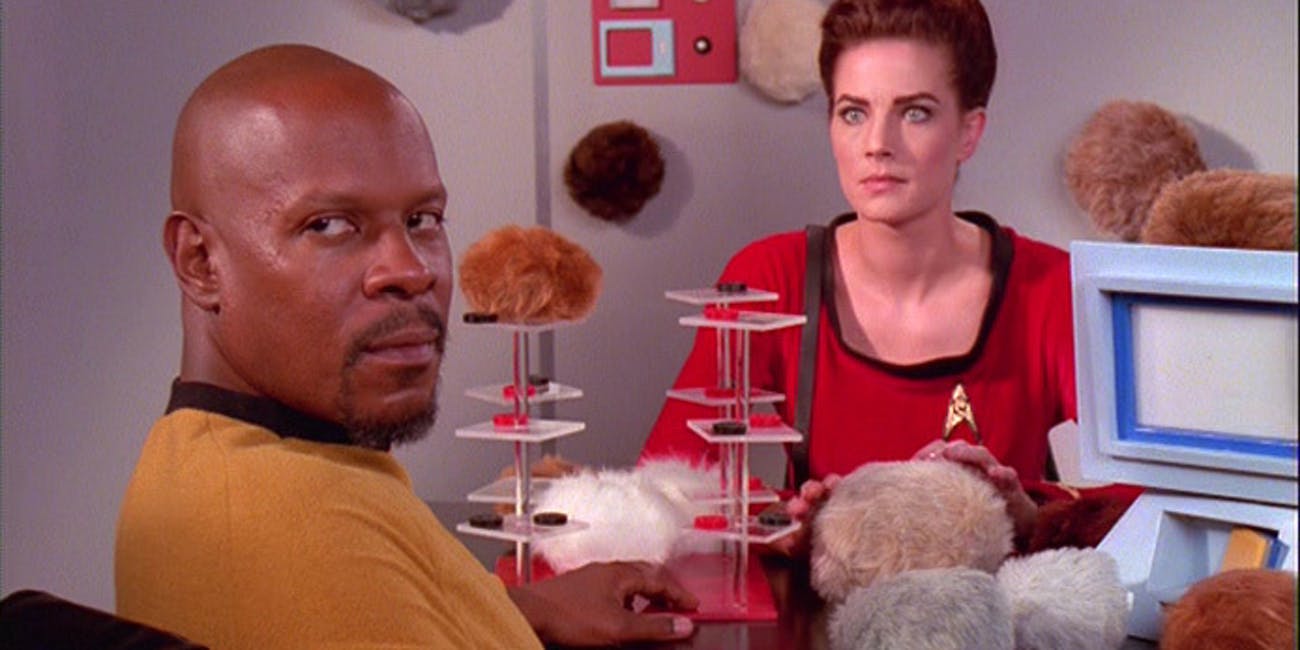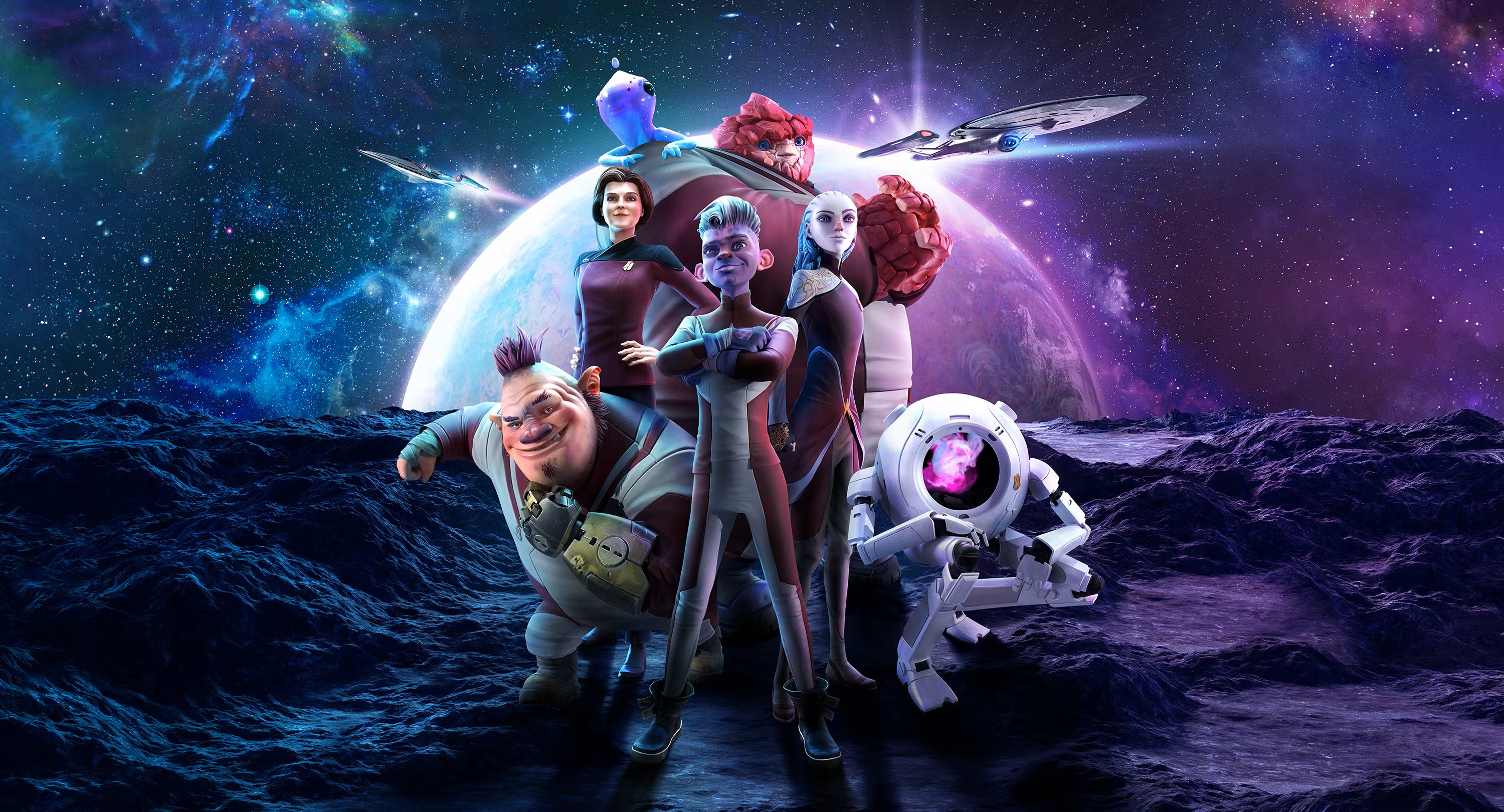This article on Star Trek: Prodigy features heavy spoilers for the second season of the show.
It feels strange to start off an article where I’ll be complaining about a show with effusive praise, but it is important to acknowledge that Star Trek: Prodigy is an absolutely fantastic show. The series at this point could be in contention for the best non-comedic Star Trek show since Star Trek: Discovery relaunched the franchise on Paramount+. It takes everything that’s great about Trek and dilutes it down wonderfully while still developing a cadre of fantastic, diverse, and engaging characters into a crew. Of all the current running shows, it quite possibly “gets” Star Trek the most.
However, criticizing something that’s great does not mean it isn’t great; it just means we can see how it can be better. And Star Trek: Prodigy‘s second second season has a worrying flaw that was handled so much better in its first season: nostalgia.
Star Trek: Prodigy’s Nostalgia Is Nothing New

Using nostalgia to help draw in an audience is nothing new to Star Trek: Prodigy or Star Trek itself. The franchise has been using it in one way or another since The Next Generation brought Scotty back for a very special episode. One of Deep Space Nine‘s best and most beloved episodes was a time-traveling crossover with The Original Series‘s “The Trouble with Tribbles.” This is even more true for the current run of Paramount+ shows, which are all heavily connected in one way or another to the past TV series, whether that be directly with Picard basically being three seasons of fan service (for better or worse) or indirectly with the plethora of references and cameos in Lower Decks. The point is that nostalgia, crossover, and cameo are tools regularly used in Trek, and a lot of the time it’s to great affect.
Prodigy is no different. In fact, its first season was one of the best uses of nostalgia the franchise has ever had. In that season, the show pulled Captain Janeway in to the series to help establish and teach new viewers just what Star Trek was all about. By inserting a holographic Janeway into the series, the show not only connected with the past for fans but also grounded itself squarely in the universe without requiring a PhD in Star Trek lore to understand what was going on. Hologram Janeway, acting as the guiding teacher for not just the young crew of the Prodigy but for the audience as well, could be any Captain for newcomers but was also a wonderful return for fans of the series. Nostalgia here was used perfectly, without the mess of continuity or the requirement of previous knowledge.
The series could then focus on Prodigy’s crew of ragtag escapees as they crossed the universe, not only learning about Star Fleet, friendship, and the bigger universe but also evolving themselves. Of course, by the end of the first season, the show started to pull in the actual Captain Janeway and hints of the second season’s bigger issue with nostalgia began to crop up.
Nostalgia as a Barrier to Entry in Star Trek: Prodigy

With Star Trek: Prodigy‘s second season, the creators dive hard into nostalgia in a way that’s far different from its first. In this season, the crew of the Prodigy is interacting directly with Star Fleet as they are pulled into a time travel plotline that involves not just the actual Admiral Janeway but also Captain Chacotay, The Doctor, Wesley Crusher, Beverly Crusher, and Voyager itself. That is a lot of lore to know for a series meant to be an introduction to Star Trek. This is especially true for Wesley, who has a convoluted and complex history involving becoming what is basically a time god. These cameos are all clearly far more played toward already-established fans of the show.
And, to be fair, it’s played really, really well, outside of The Doctor being mostly useless. Again, I’m pointing out an issue for sure, but for fans of Star Trek, this is an incredible season of television that gives us even more fantastic Janeway, explored a new side of Chakotay, and finally gave Wesley’s story arc at least a little closure. His exit from TNG left so many questions open thanks to that series’ episodic nature that even his cameo in Picard wasn’t truly enough to put a cap on his tale. Prodigy finally gave him and Beverly some closure, but at the cost of this season turning into far more of a fan love letter than a season of Prodigy.

The biggest cost of this, outside of the possible alienation of newcomers, is to the new Prodigy characters. Dal, Gwyndala, Murf, Rok-Tahk, Jankom Pog, Zero, and newcomer Maj’el lost some of the attention of the series as it dove into nostalgic storylines. This feels like even more of a shame because these are some of the best-developed characters in all of Trek, with actual evolution and growth throughout these two fantastic seasons of television. Season 2 of the series offers some truly great arcs, including Zero’s growth into a corporeal being and Dal and Gwyn’s growing relationship, but that just highlights the issue even more. It feels like we could have gotten more of it all if the show wasn’t so tied into a storyline focused on expanding the universe and emphasizing the past.
The fault here is not one in show construction or plotting, but a worrisome trend by Star Trek to veer into its past instead of constructing for its future. The crew of the Prodigy didn’t need a full season devoted to unpacking past storylines and characters because it had already delivered a season that gave us wonderful new characters. It’s a hard point to argue because Season 2 is truly fantastic, but it hints at an unfortunate overall issue with Trek‘s reliance on the past that Prodigy was so good at avoiding in its first season.
The Future of Star Trek: Prodigy Is Ditching the Past

All is not lost, however, especially given fans praise of the show. The minds behind some of Star Trek seem to understand that nostalgia will only get you so far. While Picard‘s final season was basically just an updated episode of The Next Generation, Discovery learned quickly that being pulled into the continuity of the past wasn’t going to work and launched the entire crew into the future so they could chart their own course. Did it work? Not all the time, but it definitely made the show better.
Prodigy seems to understand this as well, if the conclusion of the second season is any indication. While we don’t know if we’ll actually get a third season as, Netflix has yet to greenlight one, the show concludes with the Prodigy’s crew getting a revamped version of the ship and being sent off to explore the universe while Star Fleet struggles with the fallout of the synthetic attack on Mars. Of course, that attack is yet again a bit of continuity from Picard but the message is that the characters, along with hologram Janeway, will be on their own journey.
This is the correct direction, even if the excuse to have a crew of kids on a starship is ludicrous, and if the show gets a third season and does indeed go into a series focused solely on this crew, much like Trek before the Paramount+ shows, the future of Star Trek: Prodigy, if there is one, looks bright.
Star Trek: Prodigy is available to watch now.






Published: Jul 11, 2024 10:36 am